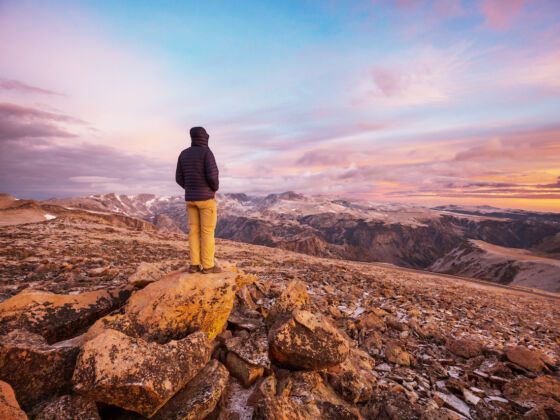In the hierarchy of American wilderness, national parks perch at the top. Yosemite’s 750,000 acres in the Sierra Nevada are more in demand than the four million acres of adjoining national forest. Yet the Stanislaus, Inyo, and Sierra national forests that surround the park on three sides share what is essentially the same land, giant sequoias, granite behemoths, and all. Great Smoky Mountains and Yellowstone, the first and second most visited national parks in the country last year, are similarly cradled by national forests. Were the boundaries between these wilderness areas unmarked, the millions of people who visit the United States’ most popular parks each year would be hard-pressed to tell where they end and their neighboring forests begin. Yet the visitor numbers suggest clear favoritism.


National Forests Are Trending for Summer Travel, and We’re Here for It
In fairness, it’s hard to say how many people visit Inyo National Forest, which shares California’s tallest peak, Mount Whitney, with Sequoia National Park, in a given year. Or how exactly the traffic in Yellowstone or Grand Teton National Park compares with that of Bridger-Teton National Forest, which sits between them. Unlike the National Park Service (NPS), the United States Forest Service (USFS) does not keep close watch over who is enjoying the land it manages.
The differences between national parks and forests do not end there. National forests are typically free while national parks have entry fees. Reservations are rarely required for national forests, and visitation is neither counted nor capped. Prohibited activities in many national parks, such as hunting and dispersed camping, are generally permitted in national forests. More often than not, even dogs are welcome on national forest trails but not those in national parks.
The reason behind these differences is baked into their designations. The NPS was established in 1916, more than 40 years after Congress founded the first national park, Yellowstone. Its mission is to preserve the nation’s natural and cultural resources, as well as provide space for outdoor recreation. The USFS already existed when the NPS was established. It was founded in 1905 following the Forest Reserve Act of 1891 in which Shoshone National Forest, one of the four national forests surrounding Yellowstone, became the country’s first. The land that the USFS oversees is multi-use, prioritizing not only preservation and recreation but also commercial activities such as logging and mining. As a result, the rules and regulations in national forests are typically looser than those of national parks. This, in many ways, makes them more enjoyable, a fact it would appear is finally being recognized by travelers.
Recently released Airbnb data comparing summer bookings in 2019 and 2021 suggests that interest in national forests is spiking. Though rural travel and road trips are trending generally, bookings do not overwhelmingly favor national park territory. Alongside interest in Whitefish Mountain and West Yellowstone, Montana, which are located near Glacier National Park and Yellowstone, respectively, is demand for destinations like Hiawatha National Forest in the Michigan Upper Peninsula and Chequamegon-Nicolet National Forest in northern Wisconsin. Black Hills National Forest in South Dakota also made the list of top destinations for summer travel, though considering its location as the backdrop to Mount Rushmore, the demand for that particular national forest is less surprising.
It is, however, a nice reminder that some of the most exciting wilderness in the US exists outside of its national parks. And considering the USFS manages 154 forests spread over 193 million acres while the NPS oversees 63 national parks spanning 84 million acres, it stands to reason that much of that wilderness is USFS land.
To suggest that national parks are overrated would not be fair. The rules, regulations, and fees that the NPS imposes are there to help preserve the land that the service protects. And even the crowds that swarm attractions like Half Dome and Old Faithful cannot diminish their wonder. On the other hand, the ease of access and freedom of exploration that travelers are afforded when they think outside the national park system is underrated.
If there’s one travel trend we can get behind this summer, it’s giving national forests the credit they’ve long deserved. Whether that means exploring Dixie National Forest instead of vying for a reservation at neighboring Zion National Park, prioritizing San Bernardino National Forest over Joshua Tree National Park next door, or visiting Olympic National Forest in lieu of Olympic National Park, there’s more than enough USFS land to go around.